Introducing Postman Pro
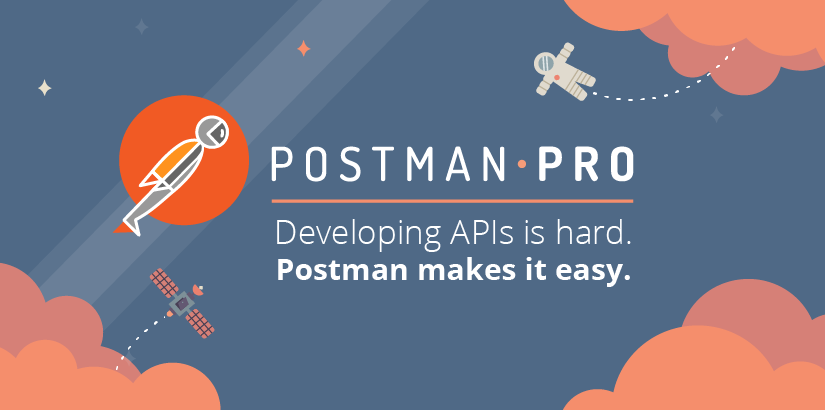
The very first time I worked on an API was with Ankit at Yahoo. I remember running to his desk every time I had a question or faced a bug – wasting a lot of time and probably annoying Ankit. We were sure there had to be a better way for working with APIs, which is why Ankit, Abhijit and I started Postman.
Last year, with the launch of Postman Cloud, we focused on improving collaboration for internal API development. With thousands of happy customers later, we realized that Postman Cloud had addressed just one part of bigger problem. Postman’s vision is to help you build a super fast and smooth workflow for API development keeping some key questions in mind:
- Where are my APIs?
- Are they documented and tested properly?
- Are they working properly all the time?
This week, we are releasing Postman Pro – the complete toolchain for the API developer. Postman Pro contains all the features of Postman Cloud, our existing paid Saas product, and has been extended to include documentation and monitoring features to answer these questions and much more. We’ve rechristened Cloud to Postman Pro, to reflect this extended feature set for the API developer.
Postman Pro Monitoring
First up, Postman Pro includes an amazing monitoring feature that lets you check for the performance, uptime and correctness of your API. Built on collections, it takes just 2 clicks to set up a monitor! That’s all — really.
When I demo Monitoring, teams are honestly startled by how easy it is to use. Your monitors are kept in sync with your collections in the Postman app at all times. This means that you can debug in the app locally, while your monitors are updated on our servers, seamlessly.
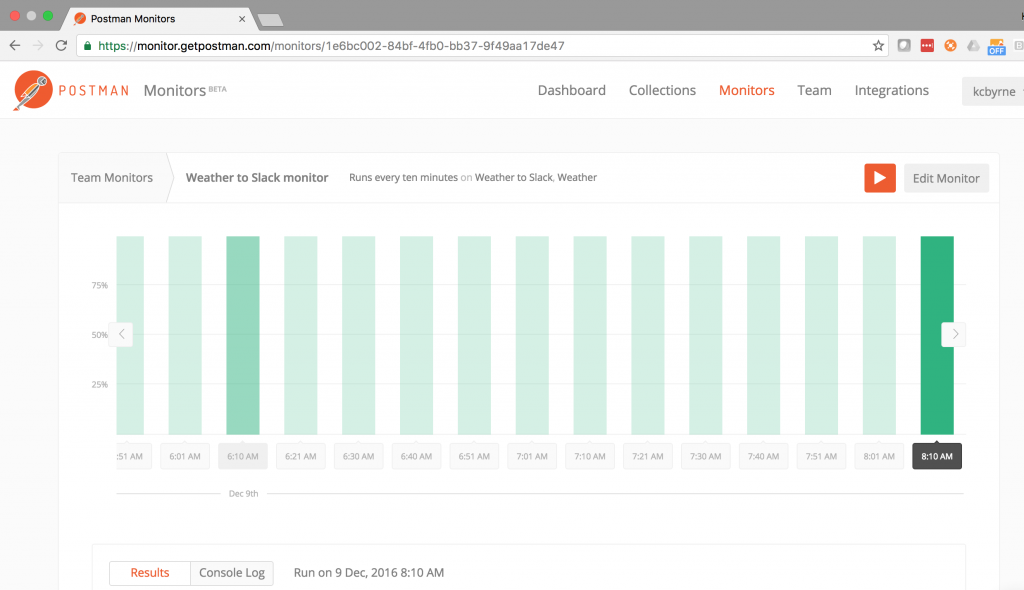
Postman Pro Documenter
Our documentation feature is a favorite of our beta testers – allowing you to share public or private documentation, beautifully viewable via a web page. Plus, today, we’re announcing two features much-requested by our customers: custom logos and colors. You can now customize public docs with your team logo along with the colors to suit your branding. As always, documentation works seamlessly and without extra steps to impede your flow.
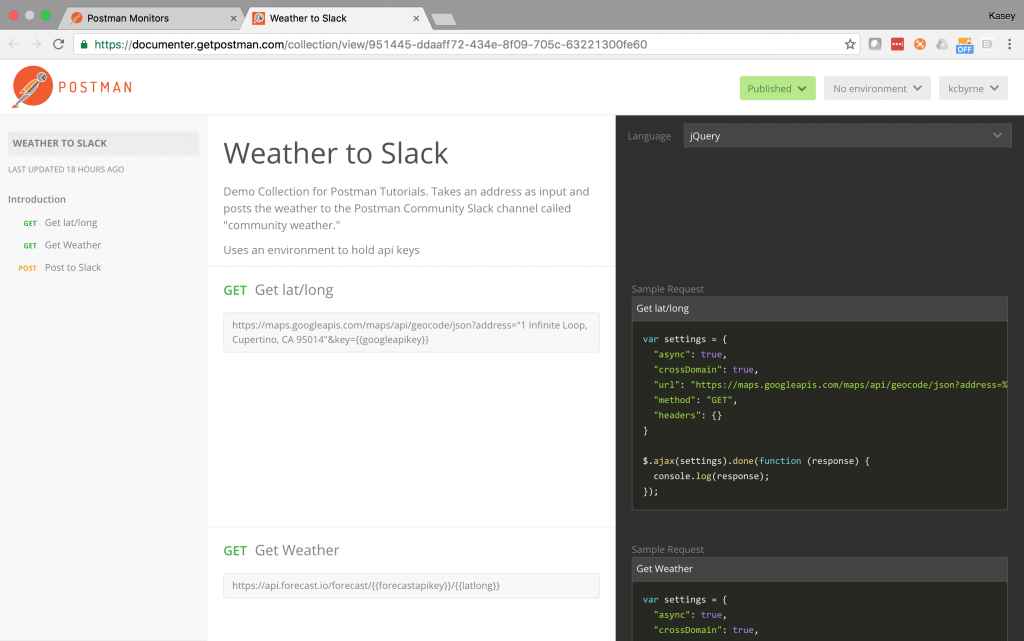
Integrations with Postman Pro
We are also launching several key integrations with your favorite development tools:
1. Github: Sync any Postman Collection to a specific repository.
2. Slack: Send activity feed to Slack and stay updated with what’s going on in your API infra. Or get updates from your API monitors in your favorite Slack channel.
3. Datadog: Get data from monitors right inside Datadog so that you can correlate with other metrics.
4. Pagerduty: Get alerts through Pagerduty whenever something goes wrong with your APIs.
We are pushing several new API endpoints to help you integrate Postman even more deeply with your development toolchain. You can now add new collections, update existing collections, update environments, add and run monitors through our API itself. These features are on top of the existing improvements to our collaboration features: Notifications, Activity feed, Access control for collections, the new collection format v2.
All the features I’ve described are available to all Postman Pro customers. Postman Pro is available at $8/user/month (paid monthly) or $75/user/year (paid annually.) Monitoring for up to 10,000 calls/month are included with the Postman Pro team subscription, and additional calls pricing is based on usage.
We don’t believe our work is done here. We believe that your workflow can be made faster, smoother and simpler. We’ll be releasing updates at a crazy pace next year. We are continuously listening to your feedback across Twitter, Github, Slack and our support channels. This would not have been possible without your support and enthusiasm. If you like Postman and Postman Pro, don’t forget to let us know on Twitter!
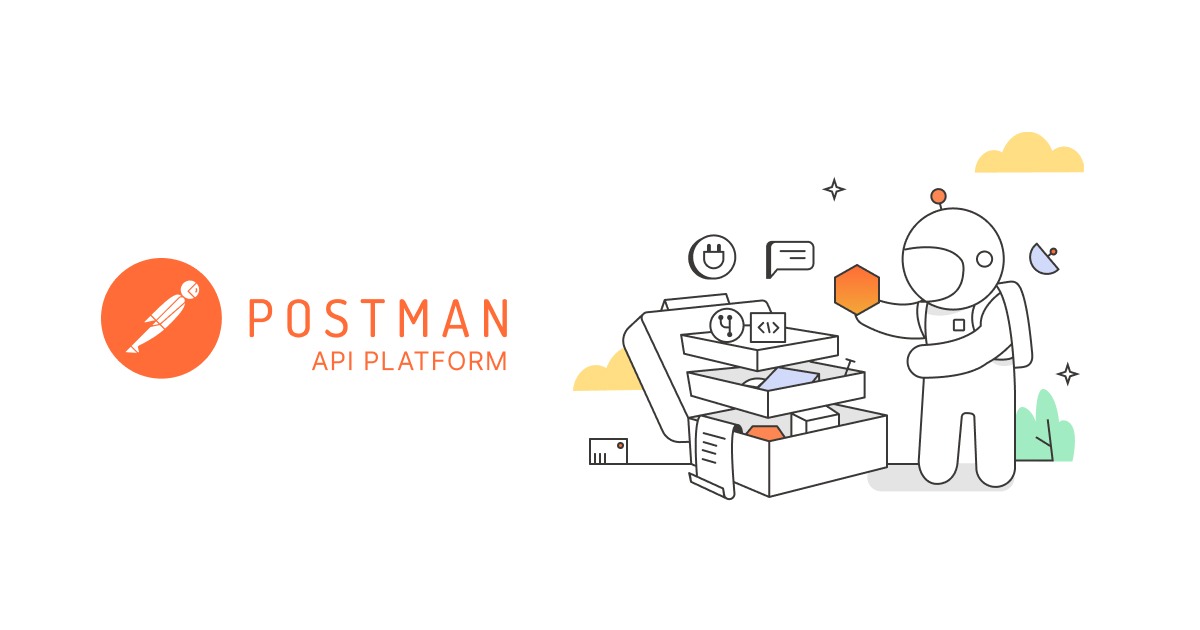
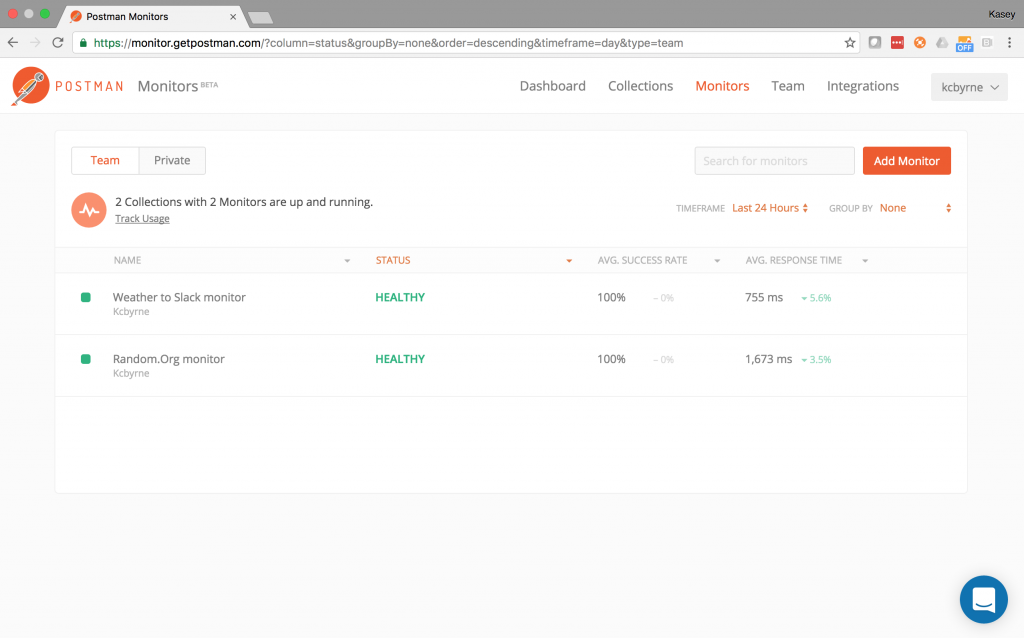
This all sounds amazing. The problem is it’s difficult to digest in terms of leveraging pragmatically. Right now these updates sound “cool” but they don’t sound “pragmatic” and maybe it’s just because I’m not understanding the use case properly.
For example – monitoring sounds great. But why would I use this monitoring? To me, monitoring means being able to monitor production issues that are occurring. Yet postman doesn’t (yet) play in production environments. So what am I monitoring? Test runs? I’m struggling to see why I would do that rather than just eyeballing the results from the test script. I’m sure there’s a use case but I think what’s missing is some documentation or, even better, videos that describe how such a feature was used in a real world scenario. Step by step.
Same for documentation and the API life cycle. I think that postman’s documentation feature is awesome. And I think the use case for publishing documentation to the outside world is obvious. Similarly perhaps for internal API documentation but what’s missing – at least in terms of me trying to wrap my arms around it – is best practices guidance to help make it real.
For example, let’s say I use postman to document all my APIs. That make sense. But now I want to tell the dev team to use it also for documenting new/changed APIs to facilitate knowledge transfer, handoff etc. What is the way I should go about doing that? That is, how do I “fork/version” the collection in an intuitive manner and then eventually bring that into the core API. This is more of a process thing and I can make up my own, but surely you must have best practices in terms of how you’re using it internally. And I think sharing that could be very valuable.
Apologies if any of the information above has been published. I have been trying to keep up but I think there might be coherent, pragmatic use cases that are missing that could help illustrate the value proposition.
Hi Nahi,
Thank you for your comment. I understand that it might be a lot to take in immediately as tooling like this actually just hasn’t existed before. Specific answers below:
1. Monitoring: You can use Postman Monitors to check your dev/staging/production environments from an external agent. Think of something like Pingdom – but just 100X more powerful. You can use collections and custom logic to build scenarios that you can execute on periodic intervals and ensure that across your entire setup, things are performing properly. You can of course use the same thing for test results but now you don’t have to run them manually. You can let Postman Pro do it for you. We are building more videos and help documentation around it. You’ll see more content on the blog soon!.
2. Documentation: Glad to hear that you like the documentation feature! The thing that we wanted to solve first was the ability to keep documentation updated with API usage. Check out this article that I posted for some best practices on docs:
3. Collaboration/Forking/Versioning: We are working on versioning and branching as of now and it’ll be out as a feature hopefully soon. For now, the process is super simple, just share a collection and other developers can subscribe to it. You can give others edit/view permissions. A lot of our customers just duplicate the existing collection and work with it until they are sure that they want to put those changes back in. I agree that it’s not the best workflow just yet but we’ll get there soon.
Again, we are working hard on our docs, videos and other forms of educating Postman users about this. Keep an eye on the blog as well as our Twitter feed!
Hi, the article link for ‘best practices on docs’ seems to be missing?
Nahi, You could use newman https://github.com/postmanlabs/newman to run the collections in production environments.
Also, Postman allows you to collaborate on a collection internally and then, when it it’s time to update the core api, you just have to click the publish button :https://www.postman.com/docs/creating_documentation
Hi,
We have a YAML collection files at github,
I couldn’t find a way to import it to the postman,
it looks for swagger format.
Can you help with this?
The tools is AMAZING!!!
I found that it is extremely easy to use and unleashes the API true power.
I have a lot to learn though in how to create tests from my API’s
or more like what tests I can create.
Hi all,
I am exploring api testing and in a phase of learning soapui, can some one please share public uri’s that are accessible, i have a requirement of preparing a poc with all the operations of post,get,put & delete operations.
If some public uri’s are shared,it would be a great help for me
Thanks & regards
shankar
Nice utility tool. Just keeps getting better.
Great team but postman needs a lot of evangelism and advocacy in the EU region.
Good things should be shared, i would wanna contribute to it, is anyone listening , ?